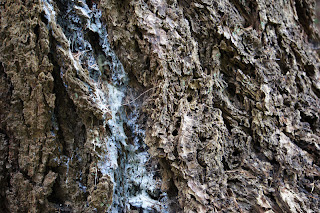I visited the Campbell Valley Regional Park, near Langley, for the first time and it was a complete delight. It is beautiful and the wild birds seem to have little fear of humans. I would recommend this as an outing to those who love nature, but have mobility problems. In my opinion, the river loop trail, which is 2.3 km (about 1.5 miles), can be negotiated in a wheel chair. There are also many benches where it is nice to listen to the bird song in the forest canopy and watch the birds foraging nearby.
Little River Loop Trail
The park is transected by the Little Campbell River. The north entrance (off 16th Avenue) is built around the loop trail. It is probably a second growth forest with some mature and old growth trees. The south entrance of the park is off 8th Avenue and is part of the Rowlatt Heritage Site (a historic farm site), with meadows surrounded by forest remnants.
Little Campbell River
The Little Campbell River is a meandering stream, mostly hidden by grasses and willows this time of year. There were Purple Martins flying over the water. Nearer the stream, itself, were dragonflies.
Nootka Rose
The understory is rich with Vine Maple, sapling Big Leaf Maples, and Alders.
The upper canopy layers are dominated by towering Cottonwoods, Douglas Firs, Red Cedars, and Western Hemlocks.
As I walked along the trail, I heard many calls of Swainson's Thrush, Robins, Black-Capped Chickadees, Spotted Towhees, and many others.
Douglas Squirrel. These little guys will get right in your face. They expect food.

Black-Headed Grosbeak
American Robin
Spotted Towhee
Black-Capped Chickadee.
As I continued to come upon unafraid birds, it became apparent that they are being fed sunflower seeds. The shells of sunflower seeds are scattered all along the 2.3 km of the trail.
Song Sparrow
The south entrance of Campbell Valley Regional Park (off 8th Avenue) has a completely different feel. There is a pond that reminds me of a small Japanese Garden or of Monet's Giverny. It is planted with flowers for attracting butterflies. There are meadowlands and an historic farm.
Lorquin's Admiral: Limenitis lorquini
This butterfly's hosts are willow and cottonwood. It is a feisty insect and will even defend its territory against birds.
The pond is host to two turtles and at least (judging by the croaking) six large bullfrogs.
Rowlatt Heritage Site
Historic Farm
Barn Swallows Insect Hunting
I will be returning to Campbell Valley Regional Park. I want to see it in the other seasons. I hope that I have convinced you to look into this gem of a nature reserve.
































